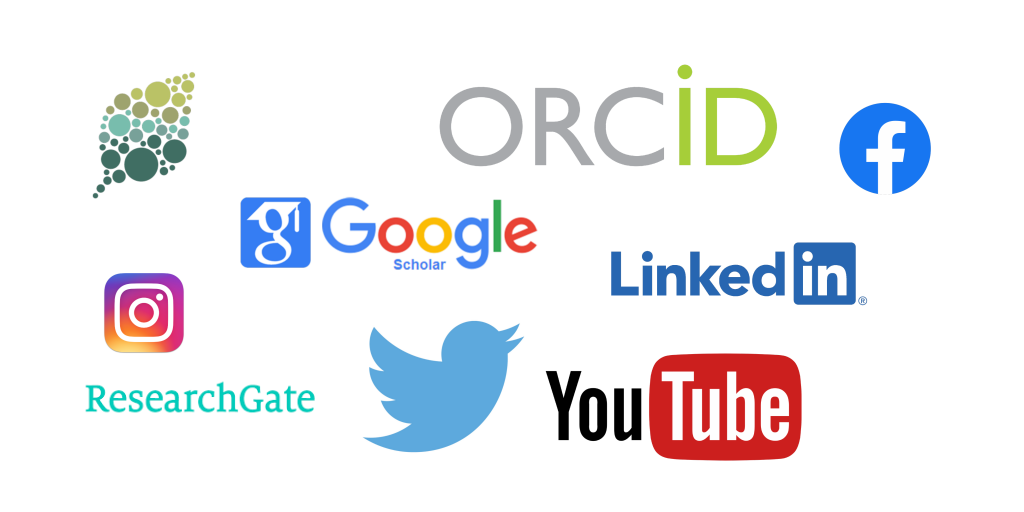9 Ways to Make Yourself Visible as a Researcher

When you are starting your journey as a young researcher, you are unaware of ways to make yourself visible among the science community. If you think that publishing paper in reputed journal is the only way, this article is for you. Early awareness about tools and platforms for science communication can help you lead a successful career with easy transition at different stages. Here, I am providing a list of open source tools/platforms, which will act as your tool-kit to enter into and navigate through the research ocean. Irrespective of your career stage, these tools will play vital role in building your profile and making your presence more obvious within and outside the scientific community.
- Google Scholar
It is one of the most widely used search engines for browsing science publications. You can claim your google scholar account by logging on to scholar.google.com and clicking “My Profile” link at the top of the page. Then all you need is to add your affiliation, position and institutional email address to let google confirm your account. Once the account is ready, you can cross check the publications listed under your name. You can manually add or remove the auto-curated publications. It’s always nice to see yourself in google search. It shows your influence and presence in the scientific community.
- ORCID
ORCID (Open Researcher and Contributor ID) provides an unique digital identifier (an ORCID iD) for every researcher. You can easily create your profile with ORCID using your email address to get your ORCID iD. This ID can be connected to your professional information like affiliations, preprints, publications, peer review, and more. Nowadays, most journals ask for the ORCID iD information of the authors while submitting the manuscript. Therefore, it’s very important to get one for yourself. Go grab one, its completely free.
- ResearchGate
ResearchGate is a wonderful open source social networking tool for scientists and researchers to share and access scientific contents, and make meaningful connections. It would be not be exaggeration to call it the Facebook for scientists. Like google scholar, it also requires the use of institutional email address to verify your account. One can ask any scientific questions, queries about protocol troubleshooting, comment on published papers, follow researchers, share your research publicly or privately, inbox people in your contact, establish collaborations and even share non-peer reviewed work. You also get information about various openings in institutions and industries. It is also a very nice platform for those who are still in undergraduate and unsure about their research interest. They can follow researchers and build a network, which can help them land on to their next career or further studies. Other interesting feature of ResearchGate is RG score, which is provided for your interaction, contribution and accomplishments within the science community.
Until few years back, only the news about celebrities and politicians used to be trending on this well-known social media platform. Twitter is widely used to share short and catchy information aided with hashtags and links. Nevertheless, now twitter has become a very strong tool in disseminating science communication. Many scientists/researchers share their publications, views on science policies, advertise about openings in their labs and share their life beyond research on this platform. With just use of selective #hashtags and tagging specific topic, person and institution, you can make your content viral. You can easily start twitting or retweeting by creating an account with your email address. This article by Cheplygina et al., 2020 summaries simple ways to getting started on twitter1.
Facebook is the most commonly used social media platform. With millions of active users, and freedom of size and type of contents to be posted, Facebook offers a great way to engage in science communication with online community. It offer features like creating pages, organizing events and groups to target specific audience or common public. One can help his/her Facebook friends (with non-science background) in understanding science facts and debunking myths about certain events and processes, which requires some level of science knowledge. During the peak of COVID-19 pandemic, social media platforms were found to be flooded with myths and misinformation 2,3. Although, many science communicators, health organizations and government agencies tried to keep the public informed, the outcome showed a need to have more number of science communicators to be active on social media.
Instagram (Insta) is widely known as a quick photo-video sharing app. You can create single or multiple insta accounts (it’s better to keep private and professional accounts separately) with your email address or mobile phone number and share your research work, life in and outside of lab, views about ongoing event or anything, including your photos in lab coat. With insta-stories feature, you can be a more interactive scientist by sharing your daily chores with your followers.
It is the most widely used professional networking platform for people from different backgrounds. It is very easy to create a LinkedIn account using your email address. This networking site offers great benefit to members in terms of creating an online portfolio, follow influential personalities, building connections with people in academia and industries, establishing collaborations, sharing your research work, asking for or providing recommendations, look for jobs and hire employees4. One can also create different groups or part of existing groups meant for certain purpose or shared interests.
- Personal website/blog
Blogging is helpful for those who are interested in detailed writing. For beginners google blogs and WordPress.com provide great freely available tools. Moreover, one can even create their own website with a little domain hosting charges. It can be very important communication tool for early career scientists and even independent scientists. They can create their own research website apart from the regular institutional website that often lacks personalized touch. A more interactive website is always helpful in flaunting your research work and team members.
- YouTube
This video sharing platform has long been used to share contents for entertainment, how to do stuffs, lifestyles vlogs, educational materials and conduct webinars. Anyone with a google account can start an YouTube channel and share scientific contents in the form of news, commentaries, panel discussion with experts and even share how to dos. It’s an underutilized platform among the science community.
While platforms like google scholar, ResearchGate and ORCID are near essential for effective presence in the science field, it is not essential to join all the mentioned platforms. Each tool comes with some pros and cons5. Therefore, one need to have a clear idea of their expectations from these platforms and be able to decide the platforms, which best serve their purpose.
References:
- CheplyginaV, HermansF, AlbersC, BielczykN, SmeetsI. Ten simple rules for getting started on Twitter as a scientist. PLoS computational biology. 2020;16(2):e1007513. doi:10.1371/journal.pcbi.1007513
- Mueller-HerbstJM, XenosMA, ScheufeleDA, BrossardD. Saw It on Facebook: The Role of Social Media in Facilitating Science Issue Awareness. Social Media and Society. 2020;6(2). doi:10.1177/2056305120930412
- GabarronE, OyeyemiSO, WynnR. Covid-19-related misinformation on social media: A systematic review. Bulletin of the World Health Organization. 2021;99(6):455-463A. doi:10.2471/BLT.20.276782
- How to use groups on LinkedIn to grow your scientific network | Labs Explorer. https://www.labsexplorer.com/c/how-to-use-groups-on-linkedin-to-grow-your-scientific-network_49. Accessed November3, 2021.
- Science communication with social media – the choice of the proper tools – Open Science Future. https://open-science-future.zbw.eu/en/science-communication-with-social-media-the-choice-of-the-proper-tools/. Accessed November3, 2021.



Thank you for sharing this post @ckgautam!
For anyone reading this who may not have created a profile here on our Plantae Community, I would also like to encourage you to sign up and fill out your profile. We hope that this platform is also a great way to share your research and connect with plant scientists.
Ah wow! This is super – I wish I had had access to this earlier in my PhD. Thank you for the share 🙂
I am glad you found it useful. Btw I also came to know about these things when I was in the middle of my PhD 😀